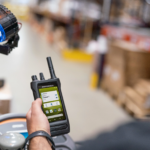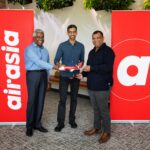In the span of five decades since setting foot in Malaysia, Motorola Solutions ((NYSE: MSI)) has established long-term collaborations with many agencies and non-profit organisations centred around research, skills and academia, to develop industry and knowledge initiatives.
One of these include advancing scientific knowledge in the Electronics and Electrical (E&E) sector and also developing software skills to further strengthen embedded computer systems.
Since 2012, the industry-led CREST, or Collaborative Research in Engineering, Science and Technology Centre, has been working with Motorola Solutions in Malaysia, as part of their mandate to carry out collaborative research with local universities and local companies to solve industry problems.
CREST Malaysia CEO Jaffri Ibrahim added that his organisation supports these partnerships with local companies and MNCs, by helping to ensure that research and local skills are used to develop products that are usually commercialised.
“Let’s do something together.”
CREST has worked on 10 projects with Motorola Solutions, and one in particular that Jaffri was very happy to see successfully commercialised. The project was to develop noise-cancelling technology that can now be found in a majority of Motorola Solutions’ communication devices.
Since 2012, the industry-led CREST, or Collaborative Research in Engineering, Science and Technology Centre, has been working with Motorola Solutions in Malaysia, as part of their mandate to carry out collaborative research with local universities and local companies to solve industry problems.
Jaffri reminisced, “They were the first to come and say, ‘Let’s do something together.’”
At that time Motorola Solutions wanted to solve a wind noise issue that had plagued mobile radio users on aircraft carriers. When an aircraft was flying, strong wind , made it difficult to have clear voice conversations on the mobile communications devices available at the time.
“We procured a wind tunnel which enabled our respective teams and another team from Universiti Sains Malaysia (USM) to simulate the same effect of wind noise when different mouthpiece designs were being tested,” said Jaffri.
At the end of the project in 2014, Motorola Solutions incorporated the design into most of its two-way radios and they have been doing so ever since.
During that time, a mechanical engineering professor, Zaidi Ripin from USM, worked closely with CREST Malaysia and Motorola Solutions to create devices with new noise-cancelling features.
At the end of the project in 2014, Motorola Solutions incorporated the design into most of its two-way radios and they have been doing so ever since.
Solving real-world problems
This is one example of how the need to solve a real-world problem helped to kickstart an exploration and knowledge-sharing process that would bring all around enrichment of the industry and its talents.
Not only was access to laboratories and resources unlocked, it allowed participants to freely flow to whereever they were needed. Motorola Solutions engineers worked alongside engineers from USM to solve an industry problem. Jaffri fondly recalled that two students involved in the project graduated with PhD and Masters degrees respectively, largely thanks to the work they did and the knowledge and experience they gained.
Of the 11 projects CREST has collaborated on with Motorola Solutions via universities including USM, eight focused on radio communications design, while three pertain to production and manufacturing process improvements.
Motorola Solutions continues to advance knowledge and share resources in the Electronics and Electrical (E&E) with partnerships like the one with CREST. Prospects to engage the country’s software and engineering talents for the future remains strong and this long-standing tradition of cooperation bodes well for the organisation as its expands its portfolio of technologies including software for command centre and frontline workers, as well as video security and access control technologies.








